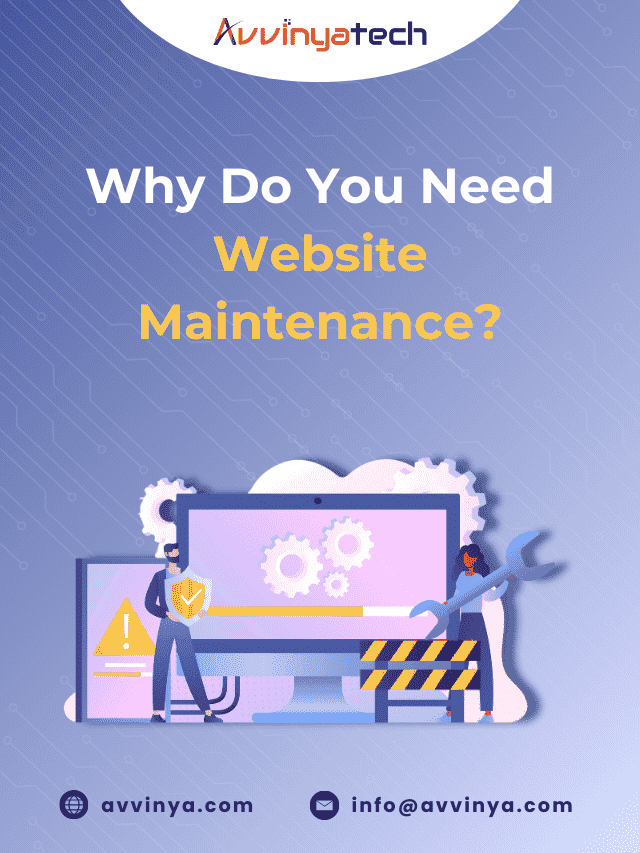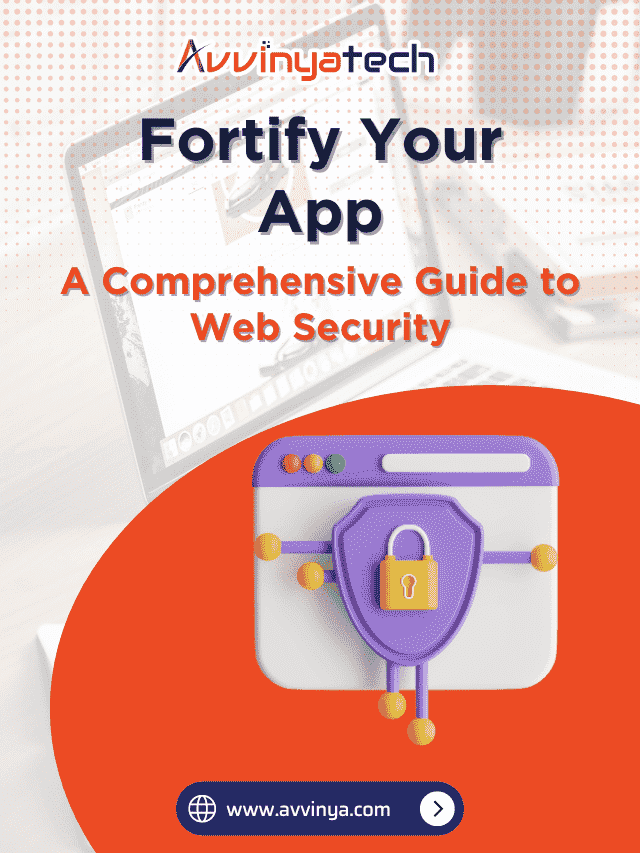Fortify Your App: A Comprehensive Guide to Web Security
Table of Contents
ToggleIn today's digital age, web security is paramount. The internet is a vast and dynamic space, filled with opportunities and threats alike. As you develop your web application, focusing solely on functionality and user experience is not enough. You must also prioritize security to safeguard your users' data and protect your business.
So, in this comprehensive guide, we will explore the essential aspects of web security, offering insights and actionable steps to fortify your app against potential threats.
Understanding the Importance of Web Security
Before diving into the nitty-gritty of web security, it's crucial to understand why it matters. Security breaches can have catastrophic consequences for businesses and individuals. They can lead to data theft, financial losses, damaged reputations, and legal liabilities. To underscore the importance of web security, consider the following:
- Data Protection: Your web application may collect and store sensitive user information, such as personal details, payment information, and login credentials. Failing to secure this data can result in identity theft and financial fraud.
- Business Continuity: Security breaches can disrupt your operations, causing downtime, financial losses, and eroding customer trust. In extreme cases, it can lead to business closure.
- Reputation Management: News of a security breach spreads quickly and can tarnish your brand's reputation. Rebuild trust after a breach is challenging and time-consuming.
- Legal and Regulatory Compliance: Many regions have strict data protection regulations, such as the General Data Protection Regulation (GDPR) in the European Union. Non-compliance can result in hefty fines.
Now that you understand the stakes. Let's explore the key components of web security and how to fortify your app.
The Pillars of Web Security
Effectual web security relies on several interconnected pillars. Strengthening each of these pillars contributes to a robust defense against threats.
Authentication and Authorization
Authentication is the process of verifying the identity of users, while authorization determines what actions they can perform once authenticated.
Authentication Best Practices:
- Use strong password policies, including requirements for complexity and regular password changes.
- Implement multi-factor authentication (MFA) for added security.
- Store passwords securely using cryptographic hashing algorithms.
Authorization Best Practices:
- Apply the principle of least privilege, ensuring users have only the permissions necessary for their roles.
- Implement role-based access control (RBAC) to manage authorization efficiently.
Data Encryption
Ensure the transformation of sensitive information into unreadable text deciphered only with the appropriate decryption key.
Encryption Best Practices:
- Use HTTPS (SSL/TLS) to encrypt data transmitted over the network.
- Encrypt sensitive data at rest using robust encryption algorithms.
- Regularly update encryption protocols and algorithms to stay secure.
Input Validation and Sanitization
Attackers often exploit vulnerabilities by injecting malicious input into web forms or query parameters. Input validation and sanitization are essential to prevent these attacks.
Best Practices:
- Validate and sanitize all user inputs, including form submissions and URL parameters.
- Implement server-side validation to avoid relying solely on client-side validation, which can be bypassed.
Security Patch Management
Web applications rely on various software components, including web servers, frameworks, and libraries. These components may have vulnerabilities that need to be patched regularly.
Patch Management Best Practices:
- Keep all software components up to date with the latest security patches.
- Monitor security advisories and apply patches promptly.
- Consider using a web application firewall (WAF) to provide an additional layer of protection.
Session Management
Session management is crucial to prevent unauthorized access and protect user data during interactions with your application.
Session Management Best Practices:
- Use secure and unique session IDs.
- Implement session timeouts and automatic logouts.
- Store session data securely and avoid client-side storage for sensitive information.
API Security
If your web application relies on APIs (Application Programming Interfaces), you must secure them to prevent unauthorized access and data leaks.
API Security Best Practices:
- Use API keys or OAuth tokens for authentication.
- Implement rate limiting and throttling to prevent abuse.
- Monitor API usage and set up alerts for suspicious activities.
Logging and Monitoring
Effective logging and monitoring are essential for detecting and immediately responding to security incidents.
Logging and Monitoring Best Practices:
- Log security-related events and errors.
- Set up automated alerts for unusual or suspicious activities.
- Regularly review logs and conduct security audits.
Common Web Security Threats and Mitigation
Understanding the most common web security threats is crucial to protect your application proactively. Here are some prevalent threats and strategies to mitigate them:
Cross-Site Scripting (XSS)
XSS attacks occur when malicious scripts are injected into web pages viewed by other users. To mitigate XSS:
- Sanitize and validate user inputs.
- Use security libraries like Content Security Policy (CSP).
- Educate your development team on secure coding practices.
SQL Injection
SQL injection allows attackers to execute arbitrary SQL queries on your database. To mitigate SQL injection:
- Use parameterized queries or prepared statements.
- Avoid dynamic SQL generation with user inputs.
- Regularly test your application for vulnerabilities.
Cross-Site Request Forgery (CSRF)
CSRF attacks trick users into performing actions on your site without their consent. To mitigate CSRF:
- Implement anti-CSRF tokens in forms and AJAX requests.
- Verify the origin of incoming requests.
- Use the SameSite attribute for cookies.
Security Misconfigurations
Security misconfigurations occur when a system is not securely configured. To mitigate misconfigurations:
- Regularly audit your application and server configurations.
- Follow best practices for server hardening.
- Use automated tools to scan for misconfigurations.
Brute Force and Credential Stuffing Attacks
Attackers may attempt to access accounts through brute force attacks or using stolen credentials from other breaches. To mitigate these attacks:
- Implement account lockouts and CAPTCHA for login attempts.
- Enforce strong password policies.
- Educate users on password security.
Distributed Denial of Service (DDoS) Attacks
DDoS attacks overwhelm your server with traffic, causing downtime. To mitigate DDoS attacks:
- Use a content delivery network (CDN) to distribute traffic.
- Implement rate limiting and traffic filtering.
- Have a DDoS mitigation plan in place.
Regular Security Audits and Testing
Regular security audits and testing are essential to identify vulnerabilities and weaknesses in your web application. Consider the following methods:
- Penetration Testing: Hire ethical hackers or security experts to simulate attacks on your application and find vulnerabilities.
- Vulnerability Scanning: Use automated tools to scan your application for known vulnerabilities and misconfigurations.
- Code Review: Review your application's source code for security issues such as insecure coding practices or vulnerabilities.
- Security Headers: Implement security headers, such as CSP and HTTP Strict Transport Security (HSTS), to add an extra layer of protection.
Educating Your Team
Security is a collective effort that involves everyone in your development team. Educate your team on security best practices, the latest threats, and how to respond to security incidents.
- Conduct regular security training sessions.
- Encourage a security-first mindset among developers.
- Develop a clear incident response plan to handle security breaches effectively.
Monitoring and Incident Response
Even with robust security measures in place, incidents can still occur. It's essential to have a well-defined incident response plan to minimize damage and recover quickly.
- Define roles and responsibilities in the event of a security incident.
- Establish clear communication channels for reporting and addressing incidents.
- Conduct post-incident analysis to learn from security breaches and improve your defenses.
Stay Informed and Evolve
The field of web security is dynamic, with new threats emerging regularly. Stay informed about the latest security trends and continuously update your security measures to adapt to evolving threats.
- Join security forums and communities to stay updated.
- Follow security blogs and subscribe to security newsletters.
- Participate in responsible disclosure programs to encourage ethical reporting of vulnerabilities.
Conclusion
Web security is not a one-time effort but an ongoing process that requires vigilance and a proactive approach. By understanding the importance of web security, fortifying your application's key pillars, and staying informed about emerging threats, you can significantly reduce the risk of security breaches and protect your users' data.
Remember, web security is an investment in the longevity and trustworthiness of your web application. You can contact our experts for more suggestions and assistance for the existing or future application you would like to develop. We have professional developers who create every project following the brand requirements and specific goals.
At avvinya, We Have Pros and Peers for More Insights!
Connect with our professional web and app specialists to achieve impeccable development and seamless execution. Allow us to comprehend your industry obstacles and deliver efficient solutions, unlocking your business potential.
Contact us today for further information (+1) 346 698 8668
(+1) 346 698 8668 

















